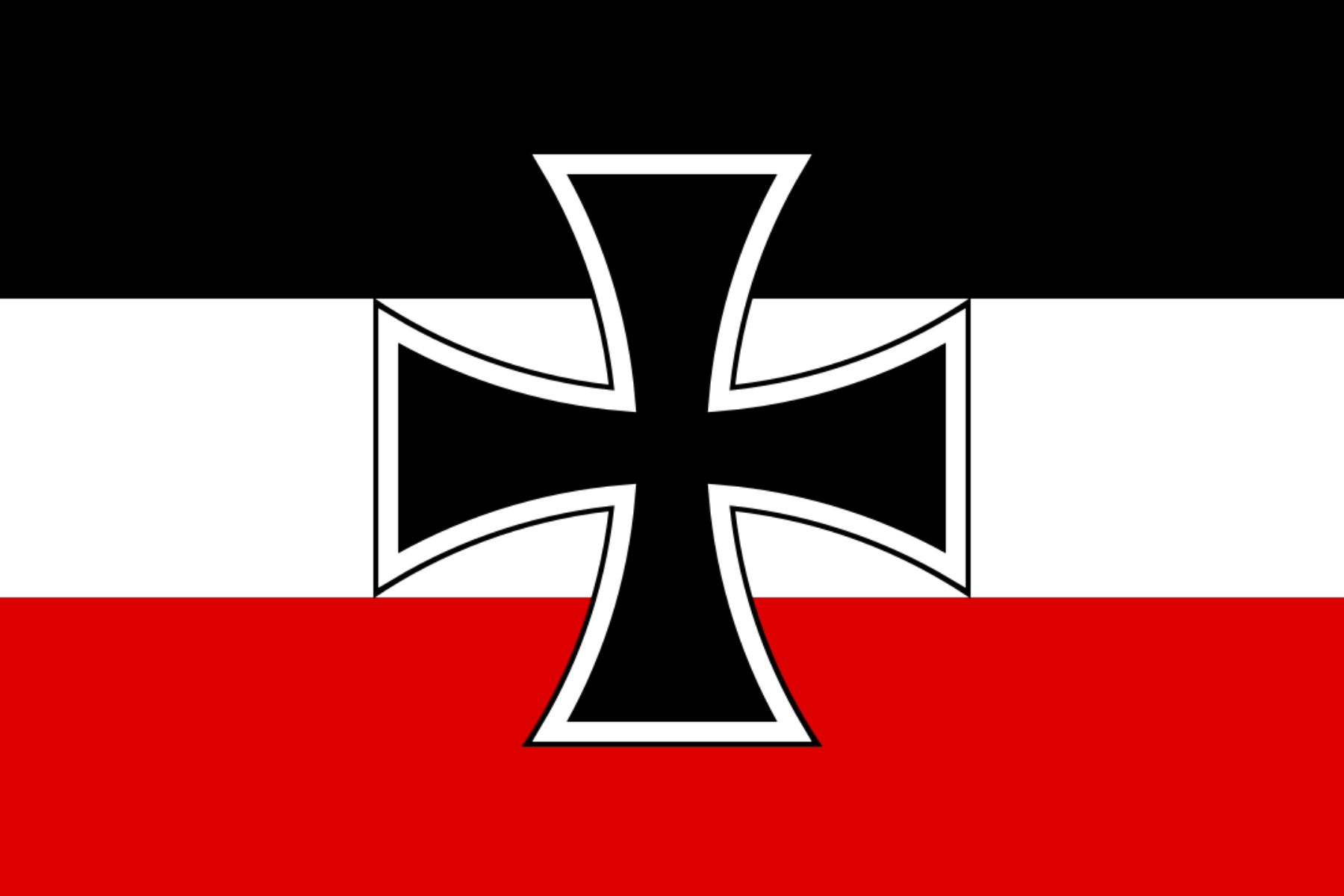Estimated reading time: 7 minutes
Contents
Key Takeaways
- The German flag is a powerful emblem of unity, democracy, and resilience.
- The Black-Red-Gold tricolour design features rich symbolism and centuries of history.
- Variants of the flag serve different purposes, reflecting Germany’s government and historical eras.
- The flag continues to foster national pride, especially during events and celebrations.
Table of Contents
- The Design of the Flag
- Meaning of Colors on the Flag of Germany
- History of the German Flag
- East Germany Flag vs. West Germany Flag
- Flag of Imperial Germany
- Germany Old Flag
- Interesting Facts about the Flag
- FAQ
The Design of the Germany Flag
The current flag of Germany consists of three equal horizontal bands: black on top, red in the middle, and gold (often appearing yellow) at the bottom. Officially adopted in 1949 for West Germany and later for reunified Germany in 1990, this design has become synonymous with German democracy, freedom, and national pride.
Design Specifications:
- Proportions: 3:5 width-to-length ratio, which is the standard format for national flags.
- Color Codes:
- Black: RAL 9005 Jet black (#000000)
- Red: RAL 3020 Traffic red (#FF0000)
- Gold: RAL 1021 Rapeseed yellow (#FFCC00)
Meaning of Colors on the Flag of Germany
The German flag colors carry deep historical and symbolic significance that resonates with the German people and their democratic values.
Black represents determination, strength, and the difficult periods in German history that the nation has overcome. It symbolizes the resolve of the German people to face challenges with dignity and perseverance.
Red signifies the blood shed for freedom and democracy throughout German history. It represents the sacrifices made by those who fought for unity, liberty, and human rights across the centuries.
Gold embodies the wealth of German culture, the golden age of German achievements in arts and sciences, and the bright future that democracy promises. Some interpret it as representing the sun and the enlightenment that democracy brings to society.
>>> Do you know the maple leaf wasn’t always on Canada’s flag? Discover the fascinating transformation of the flag of Canada through history.
History of the German Flag
The history German flag reveals a complex narrative of political change, national identity, and democratic evolution spanning over two centuries.
Origins in the 19th Century
The black, red, and gold colors first gained prominence during the 1848 March Revolution, when German liberals and democrats adopted these colors as symbols of their movement for constitutional monarchy and German unification.
The colors were inspired by the uniforms of the Lützow Free Corps, volunteer fighters who wore black uniforms with red braiding and gold buttons during the Napoleonic Wars.
Weimar Republic Era
Following World War I, the newly established Weimar Republic officially adopted the black-red-gold tricolor in 1919. This marked the first time these colors served as the official flag of a German state, representing the democratic ideals of the new republic.
The Nazi Period and Abandonment
The Nazi regime abandoned the democratic flag in favor of its own symbols, effectively banning the black-red-gold design. This period represented a dark chapter where the democratic colors were suppressed in favor of totalitarian symbols.
Post-War Revival
After World War II, the black-red-gold flag was revived as a symbol of democratic reconstruction and Germany’s commitment to peaceful, democratic governance.
East Germany Flag vs. West Germany Flag
The period from 1949 to 1990 saw Germany divided into two separate states, each with its own flag representing different political ideologies.
West Germany Flag
The West German flag maintained the simple black-red-gold tricolor design, representing the Federal Republic of Germany’s commitment to democracy, freedom, and Western values. This flag flew over West Germany throughout the Cold War period, symbolizing the democratic portion of divided Germany.
East Germany Flag
The East German flag initially used the same black-red-gold design from 1949 to 1959. However, to distinguish itself from West Germany, East Germany added a state emblem in 1959 featuring a hammer and compass surrounded by wheat, representing workers, intellectuals, and farmers, respectively. This modification reflected the communist ideology of the German Democratic Republic.
The division of flag designs paralleled the political and ideological division of Germany itself, with the West maintaining democratic symbols while the East incorporated socialist imagery.
Flag of Imperial Germany
The flag of Imperial Germany differed significantly from today’s design. During the German Empire (1871-1918), Germany used a black-white-red tricolor flag, representing the Prussian colors (black and white) combined with the white and red of the Hanseatic League.
This imperial design stood in stark contrast to the democratic black-red-gold combination. The imperial flag represented monarchy, military power, and authoritarian rule, while the current flag embodies democratic values, civilian governance, and peaceful cooperation.
>>> From monarchy to republic—the story is in the stripes. Explore how the flag of France mirrors the country’s turbulent history.
Germany Old Flag
Various old German flag designs reflect the nation’s complex political evolution:
- Holy Roman Empire: Featured the black double-headed eagle on a gold background
- German Confederation: Used black-red-gold during revolutionary periods
- German Empire: Employed black-white-red from 1871-1918
- Weimar Republic: Restored black-red-gold from 1919-1933
- Nazi Period: Abandoned democratic colors entirely
- Post-1949: Return to black-red-gold for democratic Germany
Each flag design reflected the prevailing political system and values of its era, making the current flag a powerful symbol of Germany’s democratic transformation.
Interesting Facts about the Flag of Germany
Reversible symbolism: The black-red-gold flag was banned during Nazi rule, yet it re-emerged post-WWII as a symbol of democratic values.
Same colors, different message: East and West Germany used the same base colors, but East Germany added the emblem to distance itself ideologically.
Berlin’s bear is older than the city name: The Berlin, Germany flag features a bear, even though the name “Berlin” likely comes from a Slavic word meaning “swamp,” not “bear.”
International inspiration: Germany’s flag inspired the flags of other countries with pan-German or revolutionary roots, such as Belgium and Austria’s early republican colors.
Used in protest movements: During Germany’s reunification, demonstrators waved the black-red-gold flag to promote peace and unity.
Flag Day celebration: While Germany doesn’t have an official Flag Day like some countries, the flag receives special recognition on German Unity Day (October 3rd), when citizens across the country display the tricolor to commemorate reunification.
Conclusion
The flag of Germany, with its striking black, red, and gold colors, is a testament to the nation’s values and history. As we reflect on its significance, it serves as a reminder of the resilience and determination of the German people throughout the ages.
At Flagwix, we celebrate not just the aesthetic beauty of flags but also the stories they tell and the cultures they represent. Whether you’re a history buff, a flag enthusiast, or simply curious about different cultures, we hope this exploration of the German flag has inspired you to learn more about the symbols that unite us across the globe.
—
Would you like to explore more about other national flags or delve deeper into their meanings? Let us guide you through this beautiful journey of cultural representation!
FAQ
What do the colors of the German flag mean?
Black stands for determination and strength, red for bravery and the struggle for freedom, and gold for valor and the quest for prosperity.
When was the current German flag adopted?
The flag was officially adopted for the Federal Republic of Germany in 1949, and symbolically reaffirmed after reunification in 1990.
Are there other versions of the German flag?
Yes. The national flag, government flag (Dienstflagge with the federal eagle), and historic versions exist, each used for different functions or to reflect various historical periods.
Can anyone display the German flag?
Absolutely! The flag is a proud national symbol and is commonly displayed by citizens, organizations, and government bodies on appropriate occasions.
Where can I learn more about flag history and symbolism?
To explore more, check out trusted resources like this in-depth overview of the German flag and organizations devoted to flag heritage and education.

I am a writer with a passion for flag history, symbolism, and design. I love exploring the deeper meanings behind flags and how they connect people, traditions, and personal expression.



